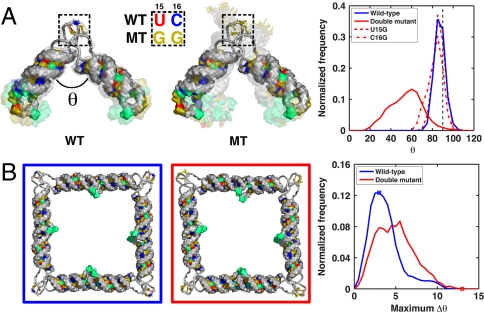Fig. 3.
Effects of sequence mutations on the flexibility of nanostructure building blocks. (A) The double mutation (MT) significantly increases the flexibility of the tRNA monomer compared to the wild type (WT). The initial starting structures are shown in solid while 10 randomly selected models from our simulations are shown in the background. The right-angle tRNA motif preferentially explores lower angles (θ) when both mutations U15G and C16G are done in concert. The increased flexibility of the monomer could facilitate formation of dimers or trimers, thereby decreasing the yield of the tRNA-square. (B) Based on our simulations, the double-mutant tRNA-square is more likely to explore distorted squares (extreme structure boxed in red; matching maximum Δθ shown in histogram plot) than its wild-type equivalent (most common structure boxed in blue), which could increase the strain on the kissing loop motifs that connect tRNA monomers together. This may explain the reduced stability of the double mutant tRNA-square found experimentally (28).

